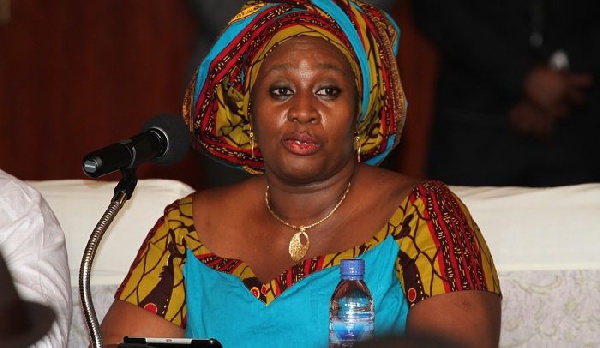

Introduction
In recent days several news items have suggested that the Ghana Revenue Authority (GRA) has met its target for fiscal year (FY) 2019—instead of a projected shortfall of about 7.2 percent of the Revised Budget amount approved by Parliament as its target. These include very front-page headlines by news outlets that have some of the nation’s finest business and economic journalists who could easily have verified the numbers or the facts. The official assertion appears to compare the slightly negative outcome between the projected actual and provisional actual amounts that the Ministry of Finance (MOF) gave in the 2020 Budget.
In recent series of articles on Ghana’s fiscal performance—Fiscal Scorecard series [Parts I to VI]; and (b) Reading the IMF Board Between the Lines—we used official data on Budgets, Revised Budgets, Provisional Estimates (emphasis added), and Provisional Actuals to show the fiscal outcomes from 2013 to 2020 (Budget). The revenue components and analysis in this article make it skeptical or incredulous to assert that GRA had achieved its “tax revenue” targets—which excludes non-tax revenues and grants for which GRA is not accountable.
A case of further distortion of fiscal rules
The fiscal data on the Ministry of Finance (MOF) “website” clearly shows that GRA did not meet the 2019 Budget [tax] revenue targets. As Table 1 shows, GRA appears to miss the target marginally, despite the apparent use of “Provisional” amounts [Columns 3, 4, 7 and 10] to replace “Revised Budget” [Column 2, 6 and 9], as highlighted—as is conventional.
Table 1: Tax Revenue [Budget and Performance]
Source: Ministry of Finance (Website) As Figure 1 shows further in graphical terms, GRA missed the target by 7.2 percent (based on the Revised Budget) and by approximately 0.1 percent (based provisional estimates). It is important to note that, GRA also missed the target in the 2019 Original Budget by about Ghc2.9 billion or 6.4 percent (Columns, 1, 5 and 8).
Figure 1: Tax Revenue [Budget and Performance]
At this point, to follow the discussion more closely, it is necessary to understand the Headings used in Table 1, which form part of the overall Fiscal Tables.
Budget Estimates or Projections: these are the amounts that Parliament approved the fiscal year for GRA to collect as its target for 2019. It has two elements— Original Budget Estimates (Column 1): These are the Estimates that Parliament approved for GRA to collect in 2019, in the Budget approved in December 2018. Revised Budget Estimates (Column 2): These are the Estimates that Parliament approved after the presentation of the Supplementary Budget and other statements during 2019. Clearly, MOF requested the House to approve a higher target, even though GRA was having difficulty in revenue collection in prior years, mainly due to distortionary tax policies.
Provisional Actual Outturn As the name suggests, the provisional outturn is the “best-effort” amount that GRA expects to, and actually, achieves for the year.
Provisional [Projected] Outturn [Column 3]: Based on actual collection to a point, GRA indicates the likely amount it can collect—which is its best estimate or projection of what it can achieve against the Revised Budget amount. Provisional Actual Outturn [Column 4]: The actual collection by GRA which it compiles and reports on monthly basis and is termed provisional since tax assessments and audits are continuous and, if material, may result in changes to amounts reported in the past. Therefore, the Government CANNOT use the Provisional [Projected] Outturn to gauge the national tax revenue target or GRA collection effort. If Government was of the view that the provisional estimates are what GRA can achieve, then it should have made it clear to the House and used that amount as the Revised Budget. The ensuing sections discuss the total revenue (i.e., tax, non-tax, and grant) performance in detail.
Conventional fiscal rule for measuring performance
Table 2 shows the performance of tax [GRA], grants (development partners (DPs) or donors), and non-tax revenue or income and fees (ministries, departments, and agencies [MDAs] and Metropolitan, Municipal, and District Assemblies [MMDAs].
Table 2: Overall revenue performance—tax, non-tax & grants
Source: Min. of Finance Figure 2 shows the Table 2 outcomes in graphical or visual terms and clearly suggests that only tax revenue from Income and Property as well as grants are positive deviations.
Table 2: Overall revenue performance—tax, non-tax & grants
Hence, for operational purposes, the government may compare the actual outturn with the original budget, revised budget, or projected outturn but it is only the revised budget that is official. Countries stick to this fiscal rule or principle to achieve—
consistency: a given approach ensures that one period can be compared with the other in formulating policy and measuring performance; fairness: besides the year-on-year, it is the only way to compare the performance of one government or administration (or nations) against another; and reliability: the use of a uniform method for analytical purposes over identical periods is not biased and conforms to generally accepted or conventional rules. The apparent change in calculating deviations is another violation of conventional fiscal rules and has serious implications and consequences for the entire fiscal framework.
Fiscal violations and implications
As Table 3 clearly illustrates, tax revenue is part of the overall fiscal framework and overlaps with its elements. Hence, a change must be consistent with other targets (e.g., GDP or total ratios) for expenditure, deficits or fiscal balances, financing or borrowing, and public debt.
Table 3: Deviation from fiscal performance
Note: Bank Bailout costs and Energy arrears shown as Memo and Amortization (not Exceptional) items In addition to using Projected Actual Outturn instead of the Revised Budget target, to measure performance, other instances of fiscal violation and manipulation since 2017 include—
Fiscal identities: The 2017 to 2019 Budgets show that the budget deficit was equal to the fiscal balances (both cash and commitment basis), hence arrears, discrepancies, and exceptional items in the fiscal framework did not make a difference. Arrears offsets: In 2016, the government alleged that arrears amounted to Ghc7 billion (deficit of 9.3 percent of GDP) but did not carry it forward to 2017. Instead, it “offset” Ghc5.03 billion (a) as “accrual” in the “cash”; and (b) as “positive” net arrears in the “accrual” sections of the same fiscal year. Arrear to the “pesewa”: Another curious phenomenon since 2017 is that amount reported for arrears (i.e., Ghc730 million Table 3) is the same for the original and revised budgets as well as the projected and actual outturn. Hence, the deviations for all three (3) possible targets are zero. Such precision in managing and paying arrears is unprecedented and practically impossible in a realistic fiscal environment. Rapid fiscal consolidation in FY2016: These offsets reduced the fiscal deficit from 9.3 percent to 6.3 percent in the same fiscal year. Curiously, this consolidation occurred under the Mahama’s administration, not in 2017 as the government trumpets to date—without precedent and antecedent. Banking sector bailout costs as Memo: The breaks with convention by showing the banking sector bailout costs as footnote, instead of “exceptional” item in the framework. Energy sector costs as amortization: Similarly, unpaid energy sectors costs for which Parliament approved borrowing or loan are added to amortization (loan repayment) directly and not added to arrears in the framework. Off-budget payments and financing: As shown in Table 4, since the items enumerated above inflate revenues as well as reduce or limit expenditures, arrears, and the deficit or fiscal balances, (a) they result in “off-budget” payments (outside the framework) and compromise level of financing reported officially in the Budget
Extension to monetary sector methodology: finally, in the last few days, the discussion on right methodologies has extended to foreign exchange reserve cover, whether the Ghana Petroleum Funds (GPF) balances form part of the buffer for emergencies or “import cover”. It seems not to matter that we have had these balances since 2011. The debate started with HE Nana Addo’s claim of better performance than his predecessor, then a snap news about the IMF’s disagreement and warning of low reserves, and before the alert about inclusion of the GPF. Under the Petroleum Revenue Management Act (PRMA), some of the funds cannot be used in even the long term (Heritage Fund) while withdrawals from the others are rules-based (Stabilization Fund). The competitive urge appears to even want to disprove the cyclical nature dwindling reserves during this period—understandable, given the endowment of two (2) more oil fields that should have seen a better performance.
The use of different criteria to report GRA achievement worsens the fiscal distortions and misrepresentation from the items noted above. It is necessary to note that items such as the bailout costs are also strenuously separated to show a lower debt burden, which is currently at about 63 percent of GDP.
IMF Article IV adjustment
In a recent article entitled “Reading IMF Between the Lines”, we noted that the Fund appears to have taken note of some of these anomalies and made adjustments in the statements and reports approved by its Board after the 2019 Article IV Consultations. The main items used in the adjustments to the fiscal and debt tables are the banking sector Bailout costs and energy sector arrears. Table 5 shows the revised position:
Table 5: Adjusted IMF Central Government Fiscal Position
Source: IMF (Article IV Consultation Statement)
Note 3: Excludes discrepancy
The IMF Board made similar retroactive adjustments to the Debt tables, which now shows (a) higher current debt levels; and (b) a past debt performance that shows that the government did not reduce the debt levels since it assumed office in 2017. For example, the 2017 total debt amount was supposed to be 57.7 percent, not 55.6 percent that compared favorably with the end-2016 performance of 55.6 percent.
Table 6: Elevated Public Debt Position
It is necessary to note that the Government has not yet adjusted the figures published on the MOF website—as reflected in Table 1 to 4 even though the authorities have given approval for the Fund to use the revised numbers, as is the convention.
Conclusion—time to show a true and realistic fiscal situation
To achieve a fiscal “target” (i.e., budget estimate) means the difference (i.e., variance or deviation) with the related “actual” or “outturn” is positive. A “deficit” or negative difference is the reverse, with the target being lower than actual. It is normal to revise the “original” Budget or Estimates which higher or lower amount then becomes the “Revised” Budget and new fiscal measure. Hence, the use of GRA’s estimate of its best revenue effort, whether higher or lower, does not constitute a new fiscal target approved by Parliament.
GRA is often commended and paid bonuses when, midway through the fiscal year, the economy faces difficulties such as the power crisis, drought or external shocks that affect the overall performance of the economy and the Authority’s performance. This is not the point of this article, even though this was not the case with the 2019 “stellar” performance of the economy when it would be expected to meet the Revised Budget targets comfortably. To be consistent with Ghana’s long-standing fiscal rules, the target for calculating the difference between projections and actual outcomes is the Revised Budget, as approved by Parliament. From MOF’s own website, this shows a shortfall of Ghc3,283.9 billion or 7.2 percent.
Source: ghanaweb.com






